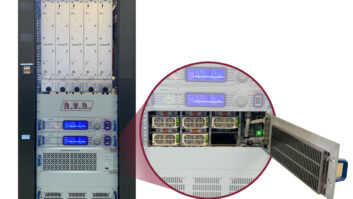As a market chief engineer who has installed HD-R systems on two AMs and three FMs, I’d like to throw in my own two cents’ worth. In particular, I want to address the negative comments that have been made about AM HD-R in this magazine. The following are my own opinions and observations, not necessarily those of my employer.
My biggest complaint about the complainers — i.e., those who want to dismiss AM HD-R — is that they propose no real, feasible and realistic alternative. You get the impression that these naysayers want to keep AM as it is, in spite of its many problems and the precipitous decline in listenership in recent decades.
Okay, suppose they get their way: If the decline continues, the day will come when the manufacturers just stop building AM radios due to lack of demand. What will they do then?
Then there are those who want to wail about might-have-beens and maybes: “If only we’d stuck with C-Quam!” (No data services, 10 kHz bandwidth and far more subject to interference than HD-R.)
Others argue that the FCC should give each AM station owner an FM, or something equally unlikely, given the shortage of spectrum availability. They are astonished that Ibiquity has the temerity to ask for licensing fees for a system that took it years, and countless man-hours, to make work.
My personal favorite? Those who grumble about imagined conspiracies and assume that “industry leaders” (whoever they are) actually “want AM to die.”
Folks, our company, Clear Channel, Citadel and a bunch of others have heavily invested in AM. You don’t buy zillions of dollars worth of property and then hope it precipitously loses its value! That’s just insane.
Just the facts, please
Now let’s establish some objective facts. AM competition doesn’t just come from other broadcasters nowadays; it also comes from the Web, satellites and other providers. Further, these new sources of entertainment aren’t going away. The future will bring even more competition, not less.
Even worse, the generation coming up now is all-digital. Surveys show that the majority of the under-35 crowd has little interest in FM, and couldn’t care less about AM. The younger ones prefer to get their music from iTunes, and the older ones use CDs and satellite. If they listen to “radio” at all, it’ll be a Web stream.
What does this mean? The currently available audience is getting older, and broadcasters are fighting over a steadily-shrinking pie. We’ve got to do something revolutionary to get listeners back, to win these young people who will be the listeners of tomorrow and to ensure the future of radio in general.
But the solution must be (a) technically feasible and (b) cost-effective. It has to be realistic and do-able. We have to ask: What can do with AM as it exists, in band, on channel?
Digital has many advantages over analog; the biggest is a signal that would be unusable for analog will work fine with digital. It is far more resistant to interference. If you don’t believe me, look at the Eb/No figures on your satellite receivers; I’ve gotten clear audio on mine with numbers as low as 4.5 dB. The same principle applies here.
I said that because some have justly complained about the initial crop of HR-R receivers. It’s true; the first generation wasn’t very impressive. But the newest, second-generation radios are already an order of magnitude better, and this can be further improved. Speaking as an engineer and programmer, if you have a known data set and know where to find it, you can work magic pulling that data out of even the worst noise and interference.
Do you realize what this means? Nighttime AM is a real possibility with HD-R! You daytimers out there with less than 100 watts of nighttime power should be all over HD!
Monster hash
Now for the one that generates the most hysteria: interference.
I have been amazed at the comments in this newspaper from people who think that HD-R “violates” or exceeds the NSRC mask specified in the FCC rules. No, it does not! This is a key feature of the Ibiquity system and it helps explain why it took so long to develop. It must be compatible with existing receivers and it has to fit into the current emission mask(s). It is, and it does.
I’ll now state another objective fact for you: It would be possible for me to build a perfectly legal AM transmitter that caused more interference than HD-R. Where did anyone get the idea that the NRSC mask is some sort of panacea for objectionable interference? There are old AM tube transmitters out there with bargain NRSC add-ons that, when driven with heavy processing, are emitting more junk outside of their primary channels than my HD-R transmitters. (I’ve heard them and you probably have, too.)
The AM NRSC standard, with its 75 usec pre-emphasis out to 10 kHz, means I am broadcasting material to either side of my carrier that directly walks on my adjacent-channel neighbors. Now, it’s true that AM HD-R then adds additional emissions out to 15 kHz to either side of the carrier, but these are at a very low level.
Once again, I would argue that I have heard stations here in Birmingham, Ala., that put out more junk at these frequencies than my HD transmitters do. Why is no one complaining about them?
A better question is: What are the HD-R naysayers actually proposing? Do they think we should forcibly limit AM to 10 kHz (or even worse, 5 kHz) and be done? If we do, it’s just going to die, anyway.
I choose to improve AM, and HD-R represents the best compromise that will allow us to use robust, error-corrected digital delivery with a full 15 kHz audio bandwidth, and all within the current NRSC mask. It works. We’re using it here and every day we get comments from new listeners who have purchased a receiver, and they all say the same thing: “Wow!”
I’ll finish on a personal note. The HD-R naysayers also apparently think that people like me are mindless kids who are simply dazzled by anything digital. We just want HD because it’s “shiny and cool” or something equally silly. Please. I’ve been in this business since the mid-‘70s and I assure you, I ain’t easy to “dazzle.”
I haven’t known the president of our company, Don Crawford, or our DOE Cris Alexander to jump blindly onto bandwagons, either. We made a conscious, informed decision to switch to HD-R on our FMs and AMs after a lot of very careful consideration.
The bottom line is that, until the naysayers can propose a real, feasible, doable and cost-effective alternative to help AM grow and survive in an increasingly competitive (and increasingly digital!) marketplace, I’m finding myself increasingly uninterested in what they have to say.












